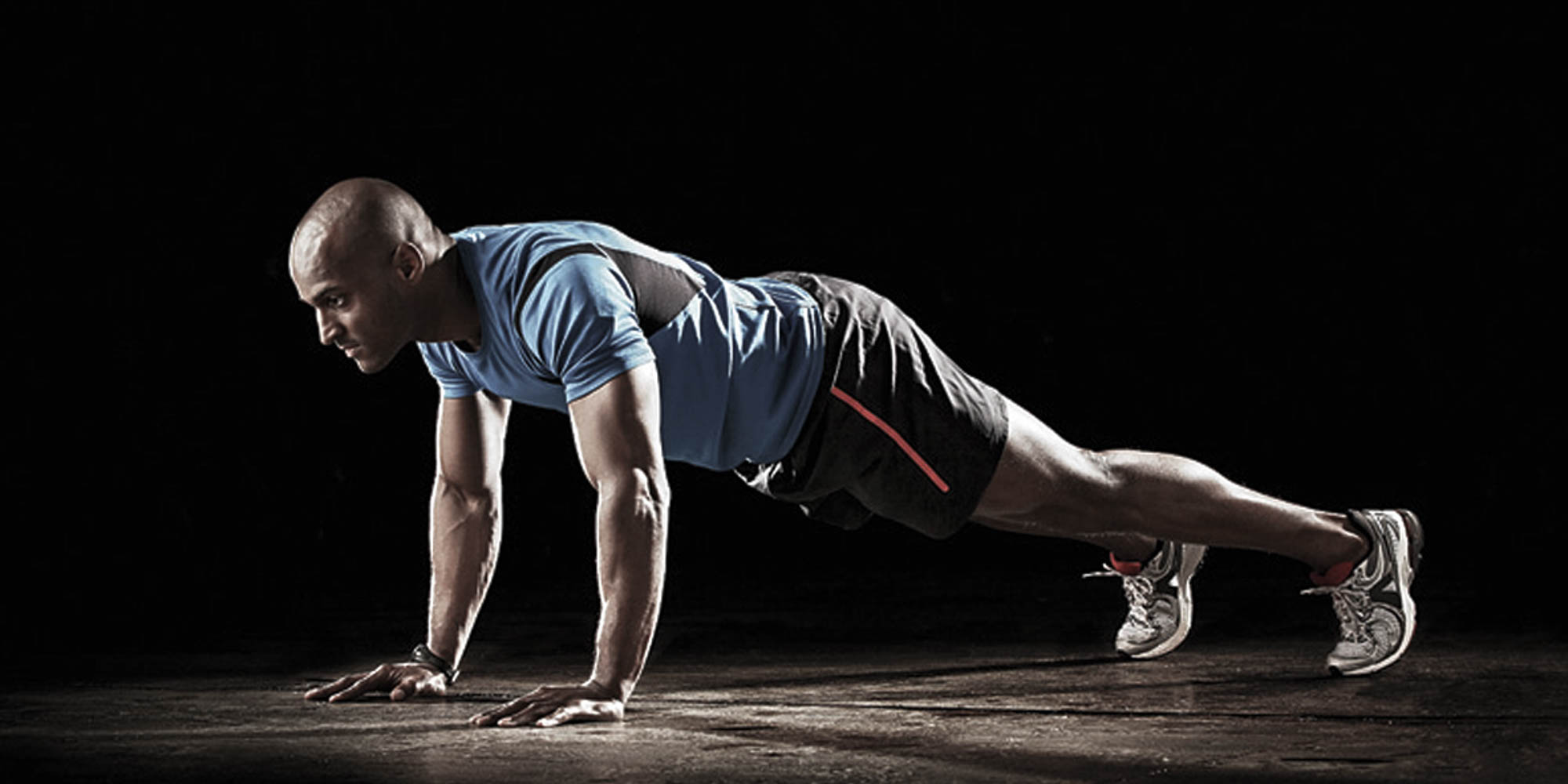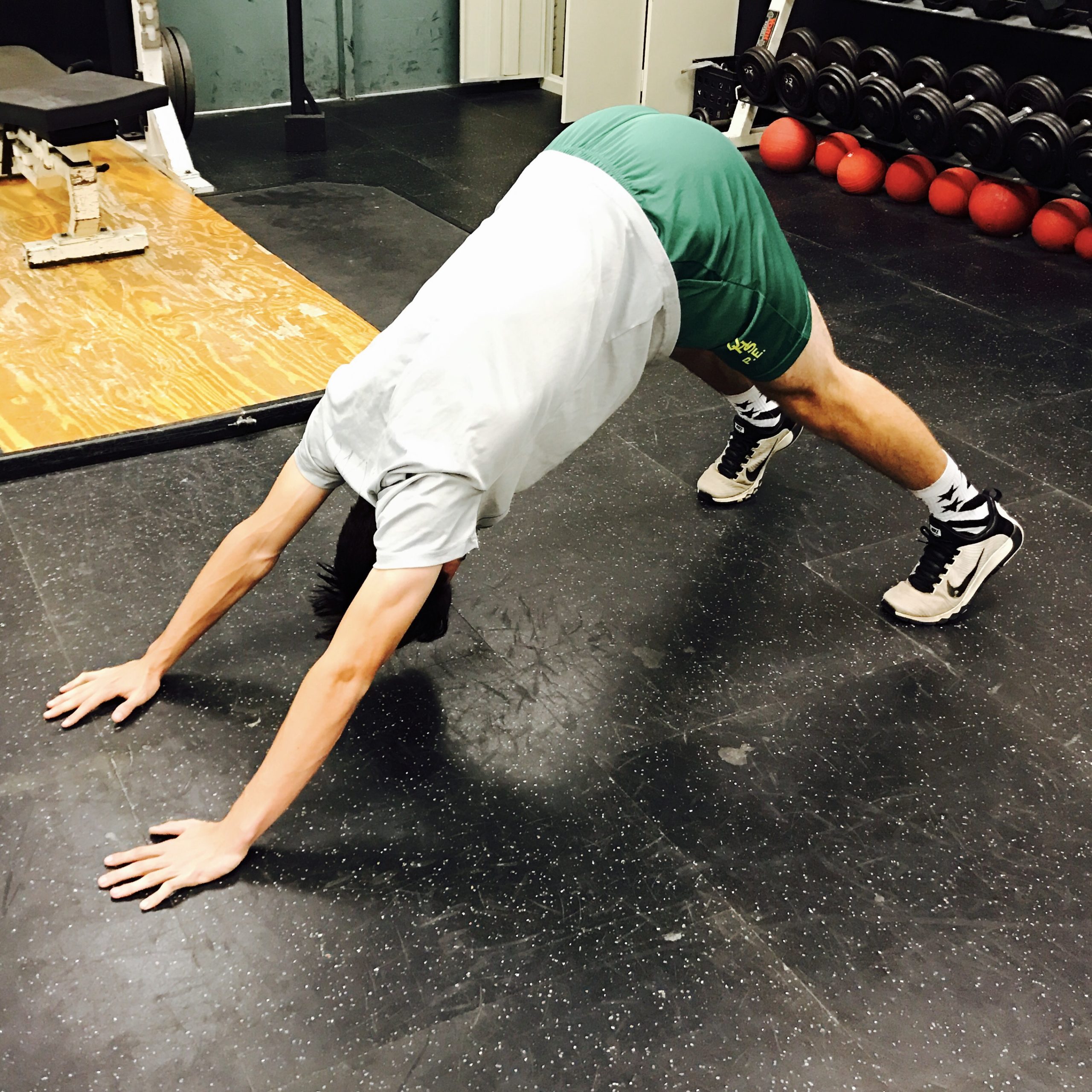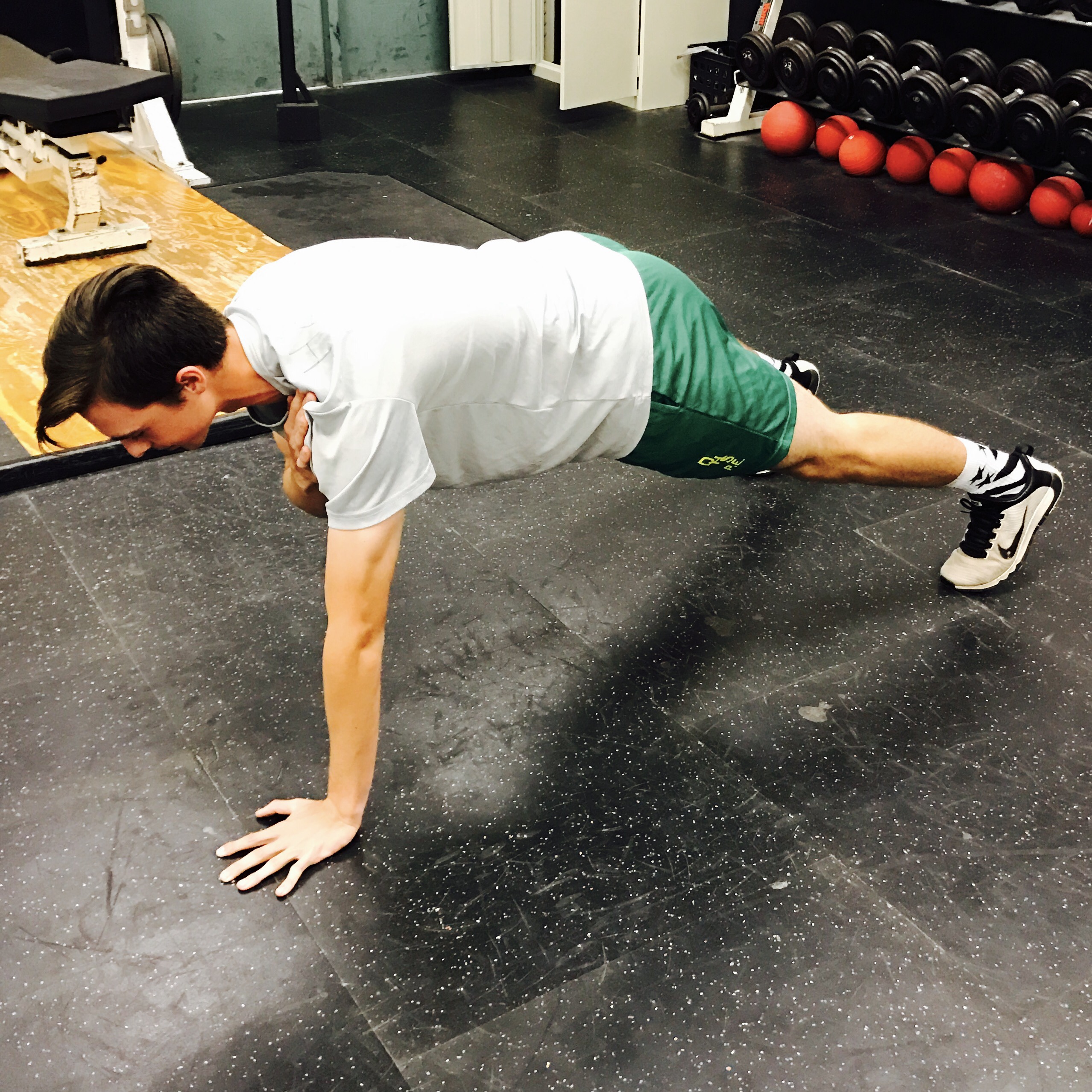Everything Push-Up: why you need it, how to teach it, ways to progress it – Part II

Part I of this series covered the basis of why the Push-Up is such a beneficial exercise for the developing baseball player – and really, any athlete in general. The benefits discussed ranged from teaching postural awareness to enhancing lumbopelvic control and trunk stability, from improving relative upper-body strength to incorporating proper scapulothoracic and glenohumeral movement. The Push-Up truly is an over-achiever in the “bang-for-your-buck” department.
Additionally, Part I covered a teaching progression for coaches and athletes who are beginners in terms of training experience. The main point of emphasis was to improve all aspects of the Push-Up (trunk stability, upper-body strength, postural awareness) simultaneously by using appropriate progression.
Today’s installment, the second and final piece of this series, is more of the “practical” component of these articles, with less discussion, and more examples of Push-Up progressions.
Basic Progressions:
The following variations of the Push-Up only include subtle changes/challenges to the base movement. In this way, they don’t over-challenge the system so that it fails and breaks, but add enough of a challenge to stimulate growth in the movement.
Push-Up Plus
Quite honestly, the Push-Up Plus is how the Push-Up itself should always be performed. As discussed in the previous article, one of the Push-Up’s strongest benefits is the freedom for scapular movement. In contrast with the Bench Press (where the scapulae are locked down in retraction for the duration of the movement), the Push-Up allows the scaps to protract and retract. The scaps, then, should protract at the top of the Push-Up each rep, but oftentimes this is cut short. The Push-Up Plus seeks to emphasize scapular protraction and a natural curving of the thoracic spine with each rep.

Yoga Push-Up
The Yoga Push-Up, or “Push-Up + A-Frame/Downward Dog” accomplishes a couple of things: for starters, it makes for a great mobility exercise for the scaps (upward rotation is needed to effectively reach full shoulder flexion) and thoracic spine (through extension). These are the more well known benefits of the movement.
But, I also use the Yoga Push-Up in my programs as a way to progress the trunk stability and postural awareness components of the High Plank and Push-Up. Once an athlete has established competency in holding the High Plank or performing the Push-Up, I will use the A-Frame/Downward Dog position to destabilize that strong postural alignment that they have built, and then force them to come back to the position and “find it” again. Before adding any perturbations or external resistances, I’d much prefer to destabilize their postural holds through rhythmic and predictable patterns of movement (i.e. going from High Plank to Downward Dog and back, repeat…), as this is a much more conservative progression of movement.

Added Resistance:
External loading is a great way to challenge both the upper-body strength and trunk stability components of the Push-Up. But, we must be careful to select appropriate loading. Just as the traditional bodyweight Push-Up may be too much loading for a beginner (e.g. the trunk sags), so too can excessive loading be too much for the intermediate. The following three loading parameters move in descending order, beginning with my preferred method of adding external loading.
Band- or Chain-Loaded Push-Up
The Banded or Chained Push-Up is my preferred method for adding external loads to the Push-Up, as they do not impede the scapulae from moving freely in the Push-Up. And, as scapular freedom is one of the main reasons ballplayers should use the Push-Up, I try to keep it a focal point.
Weighted Push-Up
The only real downside to the Weighted Push-Up (with weight plates) is the potential to prevent the scaps from moving freely.
Feet-Elevated Push-Up
While this progression does sufficiently challenge most athletes in terms of upper-body strength, it is often butchered with either too high of an elevation or a complete loss of trunk stability and postural alignment. If I am going to incorporate this variation, it will certainly be with a very slight elevation at first, and with conservative progression over time.
Instability:
By adding instability to the Push-Up with some of the following variations, trunk stability can be further developed. This isn’t because the athlete needs to “balance” more with these exercises, but rather because they put the athlete in a position that challenges the anti-extension and anti-rotation components trunk stability.
Physio-Ball Push-Up
The Phyio- or Stability-Ball Push-Up challenges both shoulder and trunk stability by providing an unstable surface. For me, it is more about having the athlete continue to focus on performing the Push-Up or High Plank with the utmost focus on posture and movement despite the dynamic environment, and less about “balancing” on the ball.
Renegade Row
When done correctly and strictly, the Renegade Row is one of the hardest version of the Push-Up you can possibly implement. That is because, in order to lift a weight off of the ground from the Push-Up position, the entire body must pick up the slack by creating immense tension. Choose an appropriate weight and you will undoubtedly feel your entire body. Choose an excessive load and you can expect to accomplish very little.
Remember: if we want to improve upper-body pulling strength, we would set up in the strongest, most conducive position possible to do heavy rows. The Renegade Row, though, is not for improving rowing strength; the position itself is inherently weak and unstable, thus we can’t row the same weight on the floor as we can from a traditional rowing position. So, instead, grab the 15 or 20 lbs dumbbells, spread your legs out wide, push your feet into the floor hard, squeeze your glutes, control your breathing, and keep your trunk as still as humanly possible as you perform the Renegade Row.
Push-Up Complexes
“The Push-Up Complex” concept deserves an article all to itself. But, briefly, I should emphasize its versatility, variety, and effectiveness.
By my own definition, a Push-Up Complex is any series of movements out of the the High Plank position. The beauty of the Push-Up Complex is that it can allow the coach to program variety (for the purposes of incremental progression, as well as athlete compliance) without having to necessarily add repetitions or load. For example, have an athlete do a set of the following:
Perform each movement in succession, 5 times through
- Push-Up x 1
- Shoulder Tap x 1 each
- Leg Lift x 1 each
- Inchworm x 1

After one set, the athlete will have only done 5 Push-Ups, but they will also have accumulated 5 shoulder taps and 5 leg lifts each side, plus many “touches” with the hands through 5 inchworms. The result is an athlete that not only feels challenged physically, but also is challenged, but in more ways than they may realize; posture, trunk stability,and shoulder stability are all tackled in this complex, as well as hip and t-spine mobility.
Want to address t-spine rotation? Add a High Plank Reach-Through; upward rotation? Add a Downward Dog. Want more of an upper-body challenge? Make it multiple Push-Ups each round, or add a Bear Crawl. When it comes to the Push-Up Complex your imagination is the limiting factor.
Alternatives to the Push-Up
Sometimes athletes can’t do the Push-Up due to injury/discomfort. Other times, you may simply want to change it up.
Neutral Grip Push-Up
By using dumbbells or the “Perfect Push-Up” handles (or something equivalent) the athlete’s wrists can be placed into neutral, thus eliminating any wrist discomfort which may be present for whatever reason. Be careful though: the goal of using this modification is to achieve a neutral wrist, not to add range of motion to the bottom of the Push-Up. Do not allow excessive extension of the humerus.
Landmine Press
The Landmine Press, in all of its loading patterns and set-ups (e.g. Half-Kneeling, Banded, Split Stance, etc.), is an excellent Pressing/Reaching exercise for the upper-body. Without going into too much depth, just know that it allows the scapula to move freely just like the Push-Up (and unlike the Bench Press).
***
Between Part I and Part II of this series, we have covered nearly everything you could need to know, as a coach or a player, in order to practically utilize the Push-Up in your training program.
In Part I we discussed the importance of incorporating “Reaching” exercises that allow the scapula to move freely in concert with the humerus, thoracic spine, and rib cage. We also went over a path for initial regression and progression for beginners.
Then, in Part II – this installment – we covered many advanced progressions for the Push-Up, including various loading patterns and methods to destabilize posture and trunk stability for a greater challenge to the entire system.
Ultimately, the goal of this two-part series is to encourage you, the athlete or coach, to appropriately implement the Push-Up, its progressions and regressions, early and often in the yearly training plan.
Want to learn more about strength training as it relates to being a better pitcher? Read all of our articles relating to strength here.
Comment section
Add a Comment
You must be logged in to post a comment.
Everything Push-Up: why you need it, how to teach it, ways to progress it - Part I - Driveline Baseball -
[…] series we will touch on the significance of the Push-Up, as well as a means to teach it. In Part II we will go over a series of progressions and variations to ensure that you get the most out of the […]